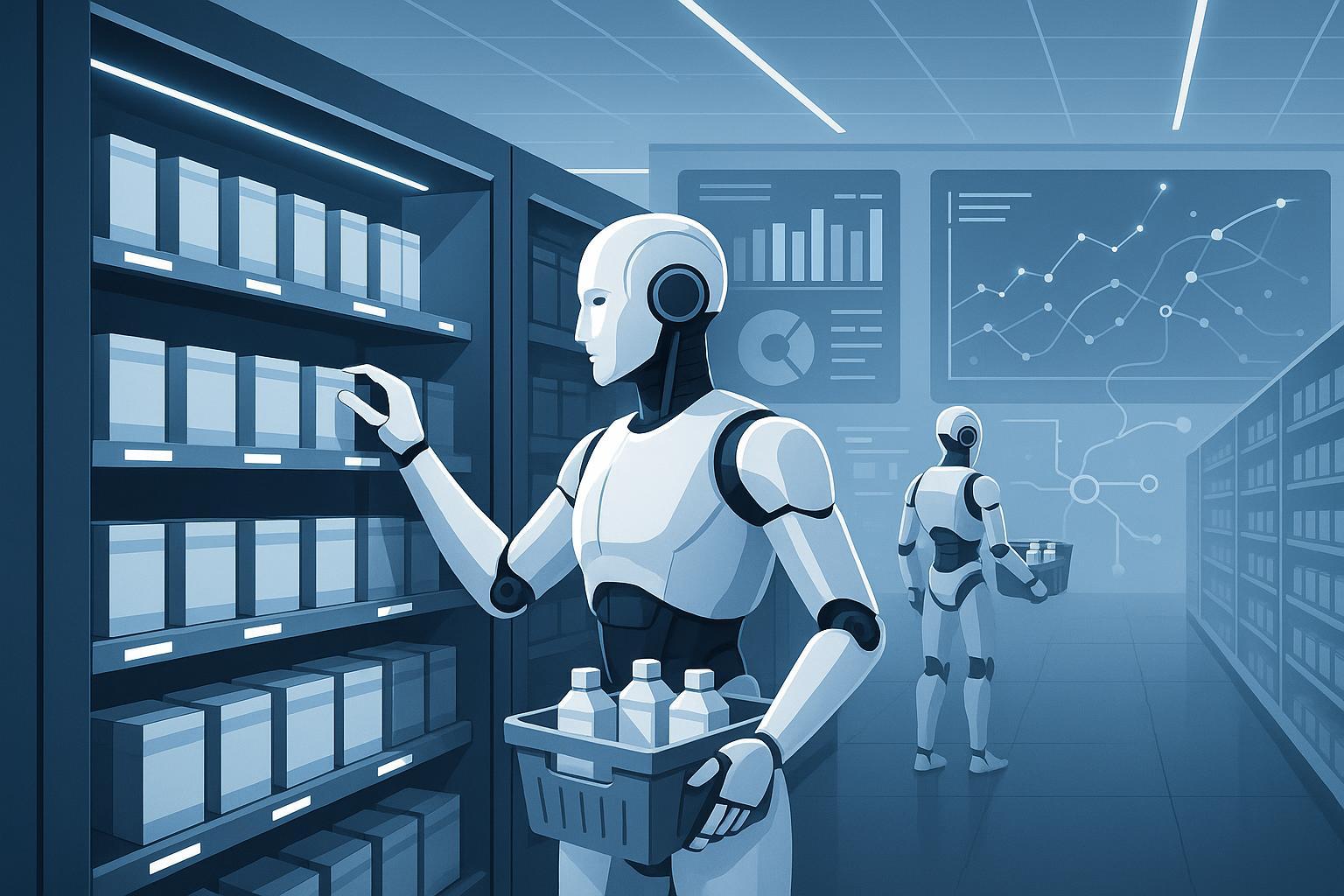Innovative Strategies for Retail Store Replenishment in 2025: The Definitive Best Practices Guide

Introduction: The Strategic Imperative for 2025
Retail store replenishment is undergoing unprecedented transformation. As 2025 approaches, rapid shifts in consumer expectations, supply chain volatility, and technological innovation are forcing retail supply chain leaders to rethink every aspect of operational agility and inventory control. According to Gartner, more than 50% of supply chain platforms will deploy intelligent autonomous agents by 2030—making strategic replenishment innovation critical for staying competitive today.
Key Retail Trends & Challenges in 2025
- AI & Predictive Analytics: Advanced machine learning and agentic AI are redefining forecasting and replenishment accuracy (NRF).
- Omnichannel Integration: Real-time inventory synchronization across physical, online, and mobile touchpoints is required for customer satisfaction and operational speed.
- Sustainability & Resilience: Retailers face growing demand for eco-friendly, resilient supply chains with transparent sourcing and minimized waste.
- Autonomous Operations: Robotics, IoT, and VMI platforms are enhancing autonomy and minimizing human error.
6 Best Practices for Innovative Retail Store Replenishment in 2025
1. Deploy AI-Powered Predictive Replenishment Across Channels
AI-driven predictive systems optimize inventory placement and restocking, reducing stockouts by up to 35% and lowering inventory costs by 10–15% (Amazon Case Study). Implementation Steps:
- Integrate POS and ERP data with machine learning platforms (e.g., Blue Yonder WMS)
- Continuously update demand forecasts with real-time sales, seasonality, and trend signals
- Automate replenishment orders to minimize manual intervention
| Workflow: Predictive Replenishment |
|---|
| 1. Connect sales/ERP systems |
| 2. Model demand & inventory |
| 3. Trigger automated orders |
| 4. Monitor KPIs (stockouts, GMROI) |
2. Harness IoT for Real-Time Inventory Visibility
IoT-enabled sensors and RFID tags deliver live inventory data, improving replenishment accuracy and enabling dynamic reorder points. Implementation Steps:
- Deploy shelf and warehouse IoT sensors
- Link sensors to your central inventory management system
- Automate real-time alerts and dynamic reorder triggers
| Tech Comparison: IoT Integration | |
|---|---|
| Tool | Key Benefit |
| RELEX Solutions | Unified analytics, automation |
| Algonomy Platform | Fast, scalable IoT deployment |
3. Establish Collaborative Vendor Managed Inventory (VMI) Models
VMI enables suppliers to proactively replenish based on agreed thresholds, cutting stockouts and enhancing supply chain flexibility (Dropoff). Implementation Steps:
- Select strategic suppliers for VMI pilots
- Define shared KPIs and replenishment parameters
- Automate data sharing and exception management
| VMI Workflow Chart |
|---|
| 1. Supplier KPIs set |
| 2. Rule-based triggers |
| 3. Exception alerts |
| 4. Continuous review |
4. Integrate Robotics for Autonomous Store and DC Replenishment
Robotics streamline real-time inventory counts and shelf restocking, minimizing human error and boosting speed (Walmart Case Study). Implementation Steps:
- Implement robotic process automation (RPA) for shelf and backroom scanning
- Connect robots to central operations for automatically triggered replenishment
- Use robotics KPIs (accuracy, speed, error reduction) for continuous improvement
| KPI Dashboard Example |
|---|
| Stockout Rate |
| Replenishment Speed |
| Error Frequency |
5. Adopt Scenario-Based Planning for Supply Chain Agility
Scenario planning models prepare you for disruptions, seasonal swings, and demand variability—aligning replenishment cycles with real market conditions (Toyota Case Study). Implementation Steps:
- Build predictive models incorporating sustainability and risk variables
- Develop contingency plans for multiple demand/supply scenarios
- Regularly test and refine agile workflows
| Scenario Matrix Table | |
|---|---|
| Scenario | Action Plan |
| Supplier Delay | Expedite alternate source, shift inventory |
| Demand Spike | Auto-order trigger, adjust safety stock |
6. Enforce Sustainability and Resilience Benchmarks
Sustainable replenishment reduces costs and strengthens brand trust. Transparent supplier practices and waste minimization are key for 2025. Implementation Steps:
- Set mandatory sustainability KPIs (energy, emissions, waste, ethical sourcing)
- Incorporate eco-friendly packaging and optimized transport routes
- Monitor performance using digital dashboards
| Sustainability KPI Checklist |
|---|
| Emissions per delivery |
| Waste reduction ratio |
| Supplier audit pass rate |
Action Checklist for Retail Replenishment Transformation (2025)
- Audit current inventory workflows and digitize where possible
- Select scalable AI/IoT platforms for integration (see RELEX, Blue Yonder)
- Pilot VMI and scenario-based planning in key SKUs or locations
- Deploy robotics for autonomous replenishment in selected stores/DCs
- Build dashboards for monitoring replenishment KPIs daily
- Establish sustainability targets for all suppliers and transportation partners
- Access downloadable templates (Smartsheet, SafetyCulture) for workflow, KPI and risk matrices
FAQ: Advanced Retail Replenishment Execution for 2025
Q: What’s the typical ROI for switching to AI-powered replenishment?
A: Industry benchmarks show a 30–50% supply chain error reduction, up to 35% fewer stockouts, and 10–15% lower carrying costs (Algonomy).
Q: How do I best mitigate risk with new replenishment technologies?
A: Use scenario planning and pilot VMI before scale-up. Continuous improvement with KPIs and external frameworks (SCOR, CPFR) is essential.
Q: How often should I revisit and optimize replenishment models?
A: Best practice is quarterly reviews, with real-time dashboards for continuous adjustment.
Q: Which frameworks support replenishment process transformation?
A: SCOR and CPFR frameworks provide stepwise guides for process optimization. Consult Gartner maturity model for staging technology adoption.
Summary & Future Outlook
The transformation of retail store replenishment in 2025 relies on actionable deployment of advanced technologies, agile process frameworks, and robust sustainability standards. Leaders leveraging AI, robotics, and scenario-based intelligence consistently outperform in speed, efficiency, and margin. Looking ahead, autonomous agentic systems and full omnichannel integration will become baseline requirements—those acting now will define the next retail era.
Further Resources:
- NRF: 25 Predictions for Retail in 2025
- Retalon: Replenishment Planning Best Practices
- Dropoff: Retail Replenishment
- Algonomy: Inventory Optimization Benefits
- Superagi: Real World Success Stories
This authoritative guide was created for senior retail supply chain professionals seeking the most advanced, actionable best practices for 2025. Bookmark this page for ongoing strategic updates and operational resources.